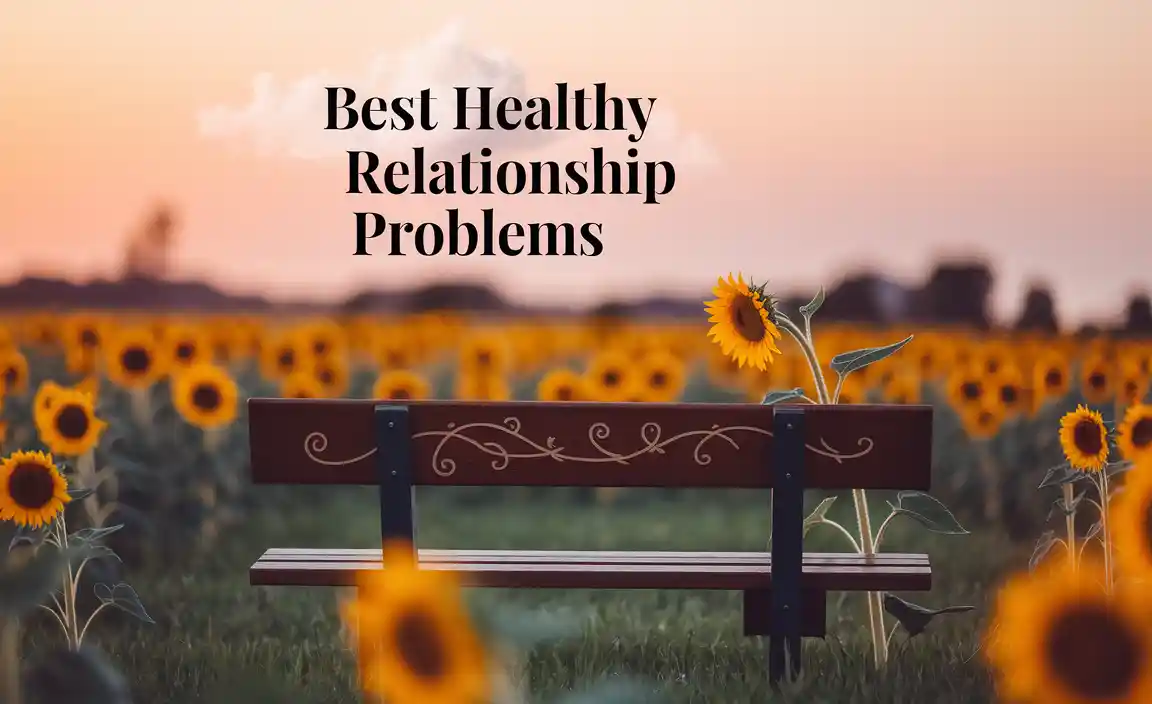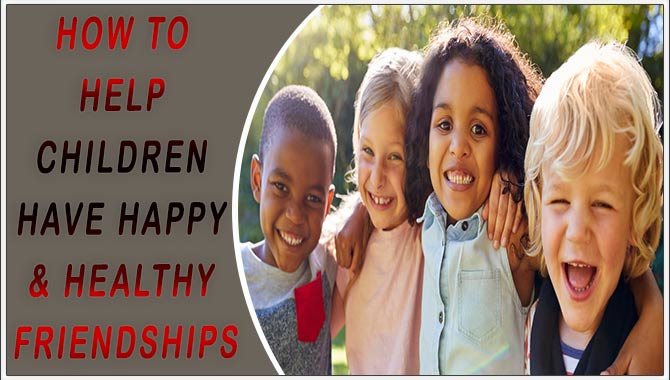Quick Summary: Healthy relationship problems are normal bumps in the road. Essential fixes involve open communication, active listening, empathy, and a willingness to compromise. Addressing issues proactively builds stronger, more resilient connections with friends, partners, and family.

Best Healthy Relationship Problems: Essential Fixes
Ever feel like even the best relationships hit a wall? It’s completely normal! Friendship, romance, or family—every connection faces challenges. These aren’t signs of a failing bond, but opportunities to grow stronger. The key is knowing how to navigate these tricky moments with grace and understanding.
Many people worry when disagreements arise, wondering if it means something is wrong. But the truth is, healthy relationships are built not by avoiding problems, but by effectively solving them. Think of it like tending a garden; you need to weed out issues to let the good stuff flourish.
This guide will walk you through the most common hurdles in any relationship and offer simple, practical ways to fix them. We’ll explore how to talk through tough topics, understand each other better, and build trust that lasts. Ready to make your connections even more amazing?
Why Problems Don’t Necessarily Mean a Bad Relationship
It’s a common misconception that a flawless relationship is one without any conflict. This couldn’t be further from the truth. Think about it: if you never disagree, are you truly being honest with each other, or just avoiding difficult conversations? Healthy relationships are more about how you handle the disagreements, not whether they happen.

Consider this: if two people completely agree on everything all the time, one of them isn’t thinking. Real connection involves different perspectives, experiences, and needs. When these clash, it’s a sign that you both have unique identities, which is a wonderful thing! The true health of a relationship is measured by its resilience and its capacity to overcome obstacles.
Research from institutions like Psychology Today often highlights that shared challenges can actually bring people closer. When couples, friends, or family members successfully work through a problem together, it builds a shared history of overcoming adversity. This shared success fosters trust, deeper understanding, and a stronger sense of partnership.
Common Healthy Relationship Problems and Their Fixes
Let’s dive into specific issues you might encounter and how to tackle them head-on. Remember, the goal isn’t perfection, but progress and connection.
1. Communication Breakdowns
The Problem: Misunderstandings, not feeling heard, assuming what the other person is thinking, or avoiding difficult conversations are all signs of communication breakdown. This can lead to resentment and distance.
The Fixes:
- Active Listening: This means more than just hearing words. It involves paying full attention, nodding, making eye contact, and summarizing what you heard to ensure understanding. Try phrases like, “So, if I understand correctly, you’re feeling…”
- “I” Statements: Frame your feelings around your own experience, rather than blaming the other person. Instead of “You always ignore me,” try “I feel ignored when we don’t spend quality time together.”
- Regular Check-ins: Schedule brief, informal times to talk about how things are going. This could be a quick chat over coffee or a walk. It’s about proactively sharing feelings and addressing concerns before they become big issues.
- Non-Verbal Cues: Pay attention to body language. Sometimes, what isn’t said can be just as important as what is. Ensure your own body language is open and receptive.
2. Unmet Needs and Expectations
The Problem: We all have needs – for affection, security, respect, autonomy, etc. When these needs aren’t met, or when expectations are unrealistic, it can cause friction. Often, these needs and expectations are never clearly communicated.

The Fixes:
- Clearly State Your Needs: Don’t expect others to be mind-readers. Gently and clearly express what you need. “I need a little quiet time to myself after work” is much better than silently fuming.
- Understand Their Needs: Ask your friend, partner, or family member what they need. Show genuine interest in their perspective.
- Manage Expectations: Are your expectations realistic given the person and the situation? Sometimes, we expect others to fulfill roles they are not equipped for, or to meet needs that we should be meeting ourselves. Verywell Mind offers great insights into identifying and managing these.
- Compromise: Relationships are about give and take. Sometimes, neither person gets their ideal outcome, but a solution is found that works for both.
3. Differences in Values or Goals
The Problem: As people grow and change, their core values or life goals might diverge. This can create significant tension, especially in romantic partnerships or close friendships.
The Fixes:
- Acknowledge and Respect Differences: You don’t have to agree to respect. Recognize that your loved one’s values are valid for them, even if they differ from yours.
- Find Common Ground: Look for areas where your values or goals align. Focus on these shared interests as the foundation for your connection.
- Support Individual Growth: Sometimes, supporting someone means allowing them to pursue different paths. This doesn’t mean you have to join them, but that you embrace their journey.
- Re-evaluate Together: If differences become too great, it might be time for an open conversation about the future of the relationship. This isn’t failure; it’s honest appraisal.
4. Trust Issues
The Problem: Betrayal, dishonesty, or inconsistency can erode trust, which is the bedrock of any healthy relationship. Rebuilding trust is a slow and delicate process.
The Fixes:
- Radical Honesty: If you broke trust, be completely honest about what happened and why. Avoid excuses.
- Consistency and Reliability: For the person trying to rebuild trust, showing up consistently and reliably is paramount. Do what you say you’ll do, every time.
- Patience and Forgiveness: For the person who was hurt, rebuilding trust takes time and a willingness to eventually forgive. This isn’t about forgetting, but about moving forward.
- Boundaries: Setting clear boundaries can help create a sense of safety and predictability, which aids in rebuilding trust.
5. Conflict Avoidance
The Problem: Some people avoid conflict at all costs, fearing it will harm the relationship. This leads to suppressed feelings, unresolved issues, and a lack of genuine intimacy.
The Fixes:
- Frame Conflict as Opportunity: Remind yourself that conflict, handled well, can lead to deeper understanding and stronger bonds (as mentioned by organizations like The Gottman Institute).
- Develop Conflict Resolution Skills: Learn phrases and strategies to address issues calmly and constructively. Practice listening more than speaking.
- Start Small: Begin by addressing minor issues. This builds confidence and skill for tackling bigger ones.
- Seek Mediation if Needed: For persistent issues, a neutral third party (like a therapist or counselor) can offer guidance.
6. Lack of Quality Time
The Problem: In busy lives, it’s easy for relationships to drift apart due to a lack of dedicated time together. This can make people feel unimportant or neglected.
The Fixes:
- Schedule It: Just like any other important appointment, schedule time for the people you care about. It might feel unspontaneous, but it ensures it actually happens.
- Prioritize Meaningful Interaction: When you are together, aim for QUALITY over quantity. Put away distractions, engage in conversation, and be present.
- Small Gestures Matter: A quick text, a thoughtful voicemail, or a shared meal can make a big difference and show you care, even when time is scarce.
- Find Shared Activities: Look for hobbies or activities you both enjoy. Doing things together, even simple ones, strengthens bonds.
Tools and Techniques for Stronger Connections

Beyond fixing problems, proactive tools can strengthen your relationships and prevent issues from escalating.
The Art of Empathy
Empathy is the ability to understand and share the feelings of another. It’s crucial for navigating relationships because it allows you to see things from your loved one’s perspective, even when you don’t entirely agree.
How to Practice Empathy:
- Put yourself in their shoes: Imagine how you would feel in their situation.
- Validate their feelings: Even if you don’t understand why they feel that way, acknowledge that their feelings are real for them. “I can see why you’d feel hurt by that” is powerful.
- Listen without judgment: Your goal is to understand, not to fix or critique, at least initially.
Boundaries: The Building Blocks of Respect
Boundaries are personal limits that define what is acceptable behavior from others. They are not about controlling others, but about protecting yourself and ensuring your needs are met respectfully. Healthy boundaries are essential for preventing resentment and burnout.
Key Principles of Healthy Boundaries:
- They are clearly communicated.
- They are consistently enforced.
- They are respectful of yourself and the other person.
- They are not rigid; they can be adjusted.
For example, a boundary might be: “I need to get 8 hours of sleep to function well. I won’t take non-emergency calls after 10 PM.” This is clear, and it protects your well-being.
Forgiveness: Releasing the Burden
Forgiveness isn’t condoning bad behavior; it’s a choice to let go of anger and resentment, not for the other person’s sake, but for your own peace of mind. Holding onto grudges poisons your own well-being and damages relationships.
Steps Toward Forgiveness:
- Acknowledge the Hurt: Don’t minimize your pain.
- Decide to Forgive: Make a conscious choice to let go.
- Shift Your Focus: Instead of dwelling on the past, focus on the present and future.
- Practice Compassion: Eventually, try to understand the humanity of the person who hurt you, which can be a stepping stone to forgiveness.
The process of forgiveness can be incredibly freeing, allowing relationships to heal or providing closure if they cannot. Resources from academic bodies like the American Psychological Association often touch on the therapeutic benefits of forgiveness.
Tables: Understanding Communication Styles
Different communication styles can sometimes lead to misunderstandings. Recognizing these can help bridge gaps.
| Communication Style | Description | Potential Relationship Impact | Tips for Working With It |
|---|---|---|---|
| Aggressive | Dominating, demanding, may interrupt, can be dismissive of others’ feelings. | Can intimidate others, create resentment, shut down communication. | Set firm but calm boundaries. Don’t engage when they are escalating; take a break. Use “I” statements to express your perspective calmly. |
| Passive | Avoids conflict, may agree readily but feel resentful later, difficulty expressing needs directly. | Can lead to unmet needs, feelings of being taken advantage of, lack of authentic connection. | Gently encourage them to express their thoughts and feelings. Ask open-ended questions. Reassure them that their opinion is valued. |
| Passive-Aggressive | Indirectly expresses negative feelings; may use sarcasm, silent treatment, or subtle sabotage. | Confusing, frustrating, erodes trust, prevents direct problem-solving. | Address the behavior directly but calmly. “When you say X, and then do Y, I feel confused. Can we talk about what’s really going on?” |
| Assertive | Expresses needs and feelings directly and respectfully, listens to others, seeks solutions. | Fosters mutual respect, effective problem-solving, strong connection. | Model this yourself! Aim for balanced give-and-take in conversations. |
FAQ: Addressing Your Toughest Relationship Questions
Q1: How often should I check in with my partner/friend?
A1: It varies, but aim for regular, meaningful contact. This could be daily texts, weekly dedicated time, or monthly longer conversations. The key is consistency and ensuring both feel connected.
Q2: My partner is always on their phone. How can I address this without starting a fight?
A2: Use “I” statements. Try: “I feel a bit lonely and disconnected when we’re together but you’re mostly on your phone. Could we set aside some phone-free time when we’re relaxing together?” Also, suggest specific phone-free activities you can enjoy.
Q3: What if we have very different ideas about money?
A3: This is a common issue! Have open, non-judgmental conversations about your individual financial habits, goals, and fears. Consider creating a shared budget or financial plan with clear agreements on spending and saving. Seeking advice from a financial advisor can also help.
Q4: Is it normal for friends to drift apart?
A4: Yes, it’s very normal. Life changes like moving, new jobs, or families can shift priorities. Sometimes friendships naturally evolve or fade. If you value the friendship, talk to your friend about reconnecting or making an effort to stay in touch.
Q5: How do I know if a relationship problem is serious enough to seek professional help?
A5: If problems are persistent, causing significant distress, affecting your daily life, or if you’ve tried addressing them on your own without success, it’s a good sign that professional help from a therapist or counselor could be beneficial. Organizations like the American Association for Marriage and Family Therapy can help you find qualified professionals.
Q6: What’s the difference between an argument and a fight?
A6: An argument often involves differing opinions but is usually approached with a desire to understand or resolve. A fight can be more heated, personal, and may involve hurtful language or behavior. Healthy relationships aim for constructive arguments, not destructive fights.
Building Resilient Bonds: A Continuous Journey
The “best healthy relationship problems” aren’t problems to be dreaded, but rather natural opportunities for growth, deeper understanding, and increased intimacy. Every connection, whether with a romantic partner, a dear friend, or a family member, will encounter its share of challenges.
The success of these relationships hinges not on the absence of conflict, but on the presence of effective tools and a willingness to use them. By focusing on clear, empathetic communication, understanding and respecting each other’s needs, maintaining trust, valuing quality time, and setting healthy boundaries, you lay a robust foundation.
Remember that building and maintaining strong relationships is a continuous process. It requires patience, effort, and a commitment to showing up for each other, especially when things get tough. Each challenge you navigate successfully together becomes another thread woven into the strong tapestry of your bond.
So, embrace the bumps in the road. With the right approach, every problem can become a stepping stone to a healthier, happier, and more resilient relationship. Keep learning, keep connecting, and continue to nurture the vital human connections in your life.







